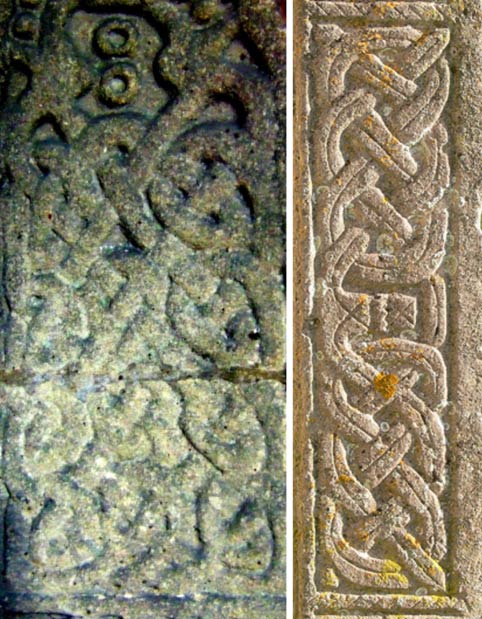
Ancient stone with strange carvings, possibly Anglo-Saxon, turns up in garden shop
A stone with mysterious carvings, possibly dating from the Anglo-Saxon or Viking era, had been on sale as a garden ornament when television host and archaeologist James Balme bought it recently, cleaned it and revealed an intricately designed carving.
He told LiveScience that it is believed to date from the Anglo-Saxon period, which lasted from 410 to 1066 A.D.
The stone weighs about 60 pounds (27.5 kilograms). Balme said it appears to be made of hard sandstone. Like some other Anglo-Saxon and Viking stones, it's wider at its base than the top. It’s 18 inches (46 centimeters) tall and 5.5 inches (14 cm) wide. The decorations are on the front face "although it does have many chisel marks on the sides and back," he told LiveScience.
MORE
- Enigmatic symbols and carvings in man-made cave in England confound experts
- The Intriguing Carvings of Rosslyn Chapel
- High status Anglo-Saxon burials in Suffolk, England, may be linked to ancient King of East Anglia
In another case, in December a gardener in Chester, England, found a rare Anglo-Saxon carving in a batch of stone he bought for his garden. In yet another case, an auctioneer found a 1,100-year-old stone carved with Christian symbols in a garage in Surrey.
The carving Balme found is unlike the other two recent finds, though, in that the symbols or designs carved into the stone do not appear to be Christian, Viking or any known system of writing or rune symbols.
The photos below shows Anglo-Saxon designs from carvings in churches, some of which resemble the designs on the stone Balme bought.

Left: An Anglo Saxon/Anglo Norse Cross carving from St Andrews Church, Aycliffe County Durham, England. (Sprat Mackrel / Wikimedia Commons). Right: Stone from Creeton Church, Lincolnshire, possibly a Saxon cross-shaft. ( Simon Garbutt photo via Wikimedia Commons)
Balme, writing on Twitter.com, told Ancient Origins that initial opinion is that the stone he found is Saxon or Viking, possibly a cross shaft or a keystone from an arch. “Ongoing research continues. Gaining worldwide interest,” he wrote.

Stone found by James Balme on sale as a garden ornament in England (James Balme photo)
Some Viking carvings are similar to Anglo-Saxon, with intricately carved crosses and knots:

Tenth-century or later lintel stone fragment showing a cross-shaped knot inspired by the carving styles of Viking England. Now in the Kelvingrove Art Gallery and Museum, Glasgow, Scotland (Wikimedia Commons)
The Anglo-Saxons took power in Britain in 410, when the Romans withdrew to defend their crumbling empire. They reigned until 1066, when William the Conqueror and the Normans came from France and prevailed in the Battle of Hastings.
The Vikings were active raiding in the British Isles from 800 to 1066 A.D. and made some large-scale settlements from the end of the ninth century.
Featured image: James Balme found this stone on sale as a garden ornament in England (James Balme photo)
By Mark Miller
















Comments
While many people would like to assume this is a mysterious object with all sorts of significance, I would propose that this looks more like a sculptor's practice piece. Sculptors need to practice somehow and I have a strong suspicion that this is one of those, preserved for posterity.
if you start from the bottom right it looks like a flower with leaves stem and bud
Do you mean the petals from above or???
I see roses looking from the wide end as the bottom